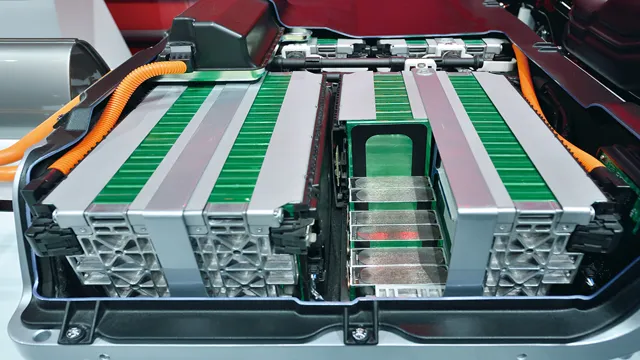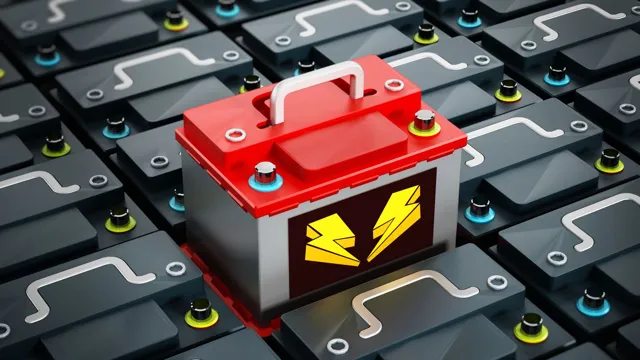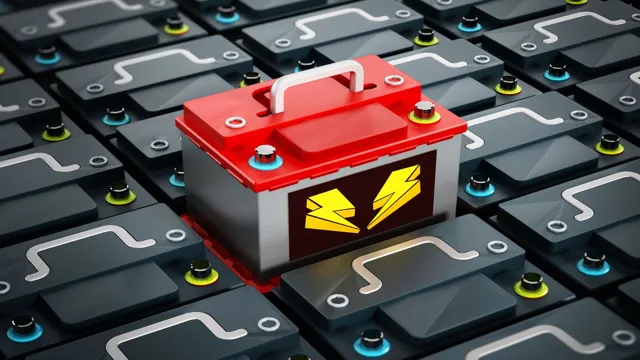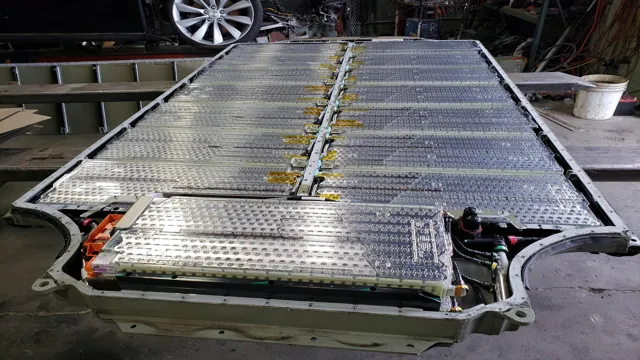Revive Your Car’s Electrical System: Troubleshooting Guide for a New Battery With No Power!
Have you ever gotten into your car and found that it won’t start? You turn the key, but nothing happens. No lights come on, the engine doesn’t turn over, and there’s no sound at all. It’s a frustrating and confusing experience, but there’s a good chance that it’s due to a lack of electrical power.
Your car relies on a complex network of electrical systems to function, and any disruption to these systems can result in a loss of power. In this blog, we’ll explore the most common reasons why your car may have no electrical power, and how you can troubleshoot the issue to get your car up and running again. So buckle up, and let’s dive in!
Testing the New Battery
You jump into your car, turn the key, and nothing happens. It’s as if your car has no electrical power. You have no idea what could be the problem until you realize that your car’s battery needs replacement.
You went ahead and replaced it with a new one, but you’re not entirely convinced it was the right solution. That’s where testing comes in. Once you have the new battery installed, you should test it to ensure it’s working correctly.
Testing your new car battery is a straightforward process that only requires a few steps. First, turn off all accessories and lights in the car. Second, turn the key in the ignition to the “on” position and wait for a few seconds.
Lastly, try starting the car. If it starts, then you’ve successfully installed a new battery. If it doesn’t, then you may have a more significant issue with your vehicle’s electrical system that requires further investigation.
Always remember to keep your car battery testing equipment handy. It’s going to be a valuable tool for diagnosing and troubleshooting car battery problems.
Checking the Fuses
If your car is having electrical issues, it’s always a good idea to start by checking the fuses. A blown fuse can cause all sorts of problems, including a dead battery. However, if the fuses are all good and you’ve recently replaced your battery, you may need to test the new battery to make sure it’s functioning correctly.
One way to do this is to use a voltmeter. You can connect the voltmeter to the battery’s positive and negative terminals and check the voltage. If the voltage is within the range specified by the manufacturer, the battery is likely in good shape.
If not, you may need to have the battery tested further or replaced. It’s always better to catch and diagnose an issue early before it becomes a more significant problem down the line. Remember, keeping up with routine maintenance can save you a lot of time and money in the long run.

Inspecting the Alternator
After replacing the old battery, the next step is to test the new battery by inspecting the alternator. The alternator is responsible for recharging the battery and supplying power to the electrical components of your vehicle. To begin the inspection, start by checking the battery cables to ensure they are tight and free of corrosion.
Next, turn on the engine and use a multimeter to measure the voltage output of the alternator. A healthy alternator should produce a voltage output between 15 and 1
5 volts. If the voltage is below this range, then the alternator may be faulty and will need to be replaced. It’s also important to check the alternator belt for proper tension and wear, as a loose or worn belt can affect the alternator’s performance.
By testing the new battery and inspecting the alternator, you can ensure that your vehicle’s electrical system is functioning properly and save yourself from any unexpected breakdowns.
Common Causes of Electrical Issues
If your car has no electrical power even after replacing the battery, there may be some common causes that you should check before panicking. A blown fuse or a faulty alternator can cause power failure. A malfunctioning ignition switch or starter motor can also be the cause of the problem.
Checking all the wiring and connections to and from the battery is also necessary. Sometimes, the battery terminals may be corroded or too loose, causing poor connections. Regular maintenance and inspections of your car’s electrical system can prevent such issues from arising.
If you are not sure about what to do, it’s best to take your vehicle to a professional mechanic who can diagnose the problem and suggest a fix. Don’t let an electrical issue leave you stranded, get it diagnosed and repaired promptly.
Loose or Corroded Battery Connections
If you’re experiencing electrical issues with your car, one of the most common causes could be loose or corroded battery connections. This happens when the battery terminals become dirty, rusty, or just plain worn out. When these connections are loose or corroded, the battery can’t deliver power to the rest of the electrical system, which can lead to problems like dimming headlights, a sluggish starter, or even a complete loss of power.
To avoid these issues, it’s important to regularly check your battery connections and clean them if necessary. Just like a heart needs proper blood flow to function, a car’s electrical system needs proper power flow to work correctly. So, make sure to keep those battery connections clean and tight to help keep your car running smoothly.
Failed Starter or Solenoid
When it comes to electrical issues in your car, there could be a number of different causes. One common issue is a failed starter or solenoid. The starter is responsible for turning your engine over when you start your car, while the solenoid essentially acts as a switch to control the flow of electricity.
If either of these components fails, you may experience issues with starting your vehicle or even complete failure to start. There are a variety of factors that can contribute to starter and solenoid failure, such as age, wear and tear, and exposure to extreme temperatures. It’s important to address these issues promptly, as continuing to drive a vehicle with a malfunctioning starter or solenoid can cause additional damage and ultimately lead to the need for more expensive repairs in the future.
By staying alert to the signs of electrical issues and getting prompt, professional assistance for your vehicle, you can help keep your car operating smoothly and dependably for years to come.
Bad Alternator or Voltage Regulator
If you’ve been experiencing electrical issues with your car, a bad alternator or voltage regulator could be the culprit. These two components work together to ensure that your car’s electrical system is functioning properly. The alternator generates power by converting mechanical energy into electrical energy, while the voltage regulator ensures that the voltage levels are consistent throughout the system.
A common cause of electrical issues is a faulty alternator or voltage regulator. Signs of a bad alternator or voltage regulator may include dimming or flickering headlights, a battery warning light on the dashboard, or difficulty starting the engine.
It’s important to address any electrical issues promptly, as they can lead to more serious problems down the road.If you suspect that your car’s alternator or voltage regulator is causing issues, it’s best to have it diagnosed by a professional mechanic. It’s worth noting that the alternator and voltage regulator are not the only potential causes of electrical issues. Other factors, such as a malfunctioning battery, corroded cables, or a faulty starter, can also contribute to electrical problems.
A skilled mechanic can help you identify and resolve any issues with your car’s electrical system.
How to Troubleshoot Your Car’s Electrical System
If your car has no electrical power despite a brand new battery, there are several potential causes you can troubleshoot. First, check the battery connections to make sure they are secure and free of corrosion. If the connections look good, test the battery using a voltmeter or multimeter to verify that it is holding a charge.
If the battery is fine, move on to inspect the alternator. The alternator is responsible for recharging the battery while the car is running, so if it is faulty, the battery won’t charge properly, leaving you with no power. Check the alternator belt tension, the connections, and test the alternator with a voltmeter.
Another possibility is a blown fuse, so check the fuse box for any burned-out fuses. If you can’t find the issue on your own, it may require a professional mechanic’s attention. Regardless of the issue, taking the time to inspect and troubleshoot your car’s electrical system can save you time and money down the line.
Using a Multimeter
If you’re having trouble with your car’s electrical system, using a multimeter is a great way to troubleshoot the problem. A multimeter is a tool that measures electrical voltage, current, and resistance. It’s a versatile tool that can be used to check various components of your car’s electrical system, such as the battery, alternator, and fuses.
To use a multimeter, start by turning off your car’s engine and disconnecting the positive terminal of the battery. Set your multimeter to the appropriate range and connect the positive and negative probes to the corresponding terminals of the component you want to test. If you’re testing the battery, for example, connect the positive probe to the positive terminal of the battery and the negative probe to the negative terminal.
Once you’ve connected the probes, turn on your multimeter and read the value on the screen. For a battery, you should see a reading between 14 and 1
8 volts. If the reading is lower than this, it may indicate a weak or discharged battery. You can also use a multimeter to test the alternator by connecting the probes to the positive and negative terminals while the engine is running.
If the voltage reading is between 18 and 12 volts, the alternator is working properly.
Overall, using a multimeter is a simple and effective way to troubleshoot your car’s electrical system. By following the steps outlined above, you can quickly identify any issues and take the necessary steps to fix them. So if you’re experiencing electrical issues with your car, don’t hesitate to invest in a quality multimeter and start troubleshooting today!
Checking the Wiring
When your car’s electrical system is acting up, one of the first things you should check is the wiring. Loose, damaged, or corroded wiring can cause a variety of issues, from dim headlights to a dead battery. Start by inspecting the battery cables for corrosion or damage, and ensure they are tightly connected.
Check all visible wiring for visible damage or fraying. If you don’t see anything obvious, it may be necessary to use a multimeter to test the electrical flow through the system. Keep in mind that electrical issues can be tricky, and sometimes it may be necessary to seek the assistance of a professional mechanic.
By taking care to regularly inspect and maintain your car’s electrical system, you can help prevent costly breakdowns and keep your car running smoothly.
Preventing Future Electrical Issues
If you’ve ever experienced the frustration of a car that won’t start or has no electrical power with a new battery, you know that it’s not only inconvenient, but it can be dangerous, especially if it happens while you’re driving. But there are ways to prevent future electrical issues and ensure your car runs smoothly. First, check your battery’s connections regularly.
Make sure they’re tight and clean. Corrosion can build up on the terminals, which can weaken the connection and drain the battery. Next, keep an eye on your battery’s age and replace it before it fails.
Most car batteries last about three to five years, depending on usage and climate. Finally, have a professional mechanic inspect your electrical system once a year. They can identify potential problems before they become major issues and ensure your car is running at its best.
By staying on top of your car’s electrical system, you can prevent future problems and keep yourself safe on the road.
Conclusion
Looks like this car’s new battery is about as useful as a flashlight with no batteries – in other words, completely worthless. Without any electrical power, this car won’t be going anywhere fast (or at all, for that matter). Time to call a mechanic and get this issue sorted out before the car becomes nothing more than an expensive paperweight.
“
FAQs
What are the common causes of a car having no electrical power despite installing a new battery?
Some common causes of a car having no electrical power despite installing a new battery include a faulty alternator, corrosion on battery terminals, blown fuses, or a faulty starter motor.
How can I check if the problem with my car’s electrical system is a dead battery or something else?
You can check if your car’s battery is causing the problem by using a multimeter to test the battery’s voltage. If the voltage is less than 12.4 volts, your battery may be dead, but if it reads 12.4 volts or higher, there may be other issues with your car’s electrical system.
Why does my car battery keep losing its charge even after installing a new one?
There could be several reasons why your car battery keeps losing its charge after installing a new one. You may have a parasitic drain, which is when the electrical components in your car continue to draw power even when the car is turned off, or your alternator may be faulty and not charging the battery properly.
What should I do if my car has no electrical power and I have tried installing a new battery?
If your car has no electrical power despite installing a new battery, you should have a professional mechanic diagnose the issue. They can perform a thorough inspection and check for any underlying problems such as a faulty alternator, corroded battery terminals, or a blown fuse.





